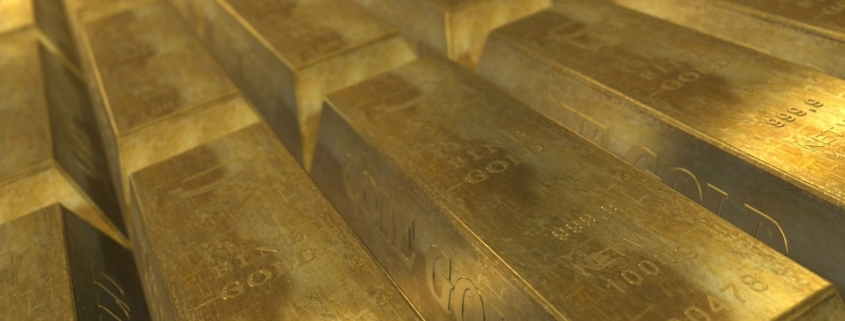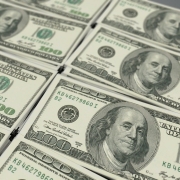Why did Nixon end the Bretton Woods system?
Topic of Study [For H2 History Students]:
Paper 1: Understanding the Global Economy (1945-2000)
Section B: Essay Writing
Theme II Chapter 1: Problems of economic liberalisation
Historical background
In 1944, an international monetary agreement was signed in 1944 at the Bretton Woods Conference. Under this agreement, foreign currencies were defined in terms of the US dollar (USD). A new system was established in the post-WWII period to replace the Gold Standard that ended in 1993 following the Great Depression.
Under this system, a fixed exchange rate was established, in which one ounce of gold is equivalent to 35 USD.
When nations participate in a pegged exchange-rate system, they agree to fix the value of their currencies relative to another currency rather than to a commodity such as gold. The US dollar was chosen as the base currency and all the countries agreed to keep the value of their currency within plus or minus 1 percent of a specific value of the dollar. […] In contrast to all other nations, the US currency maintained a relationship with gold fixed at $35/ounce. Thus, because the US dollar remained fixed to gold, this was an indirect gold standard, but nations used US dollars rather than gold to settle international transactions.
An excerpt taken from “International Business: Strategy and the Multinational Company” by K. Praveen Parboteeah and John B. Cullen.
With support from the International Monetary Fund (IMF), an automatic adjustment helped nations to avoid the onset of deflation, thereby maintaining stable exchange rates. By the late 1950s, key trading nations loosened exchange restrictions to accept the international gold standard.
Dollar shortage & the Gold Pool
Following the Second World War, governments in Western Europe imported US-made machinery and merchandise. Consequently, there was a surge in demand for USD, given that more nations underwent post-war economic reconstruction. During the Presidential polls in August 1960, US Senator John F. Kennedy declared his plan to “get America moving again“, giving rise to a ‘gold rush’.
As a result, the increase in market price of gold in London to $40 sparked fears of an unstable USD-gold parity. As such, a “Gold Pool” was created in November 1961, in which eight central banks agreed to buy and sell gold only at the official price of $35. Seven other central banks agreed to provide half of the gold supply to keep the market price of gold stable.
The spike in the London market price sparked fears that governments, seeing the writing on the wall, might demand wholesale conversion of their dollars into gold. In response, the US Treasury provided the Bank of England with gold to be used to bring the price of gold on the London gold market, where the metal was bought and sold by private investors (some would say “speculators”), back down to $35, and the governments of principal industrial countries agreed to refrain from buying gold at a higher price.
[…] What the left hand gave, the right hand taketh away, in other words, in a classic instance of a collective-action problem. As a result, the Gold Pool did little to resolve the internal contradictions of what was now referred to as the Bretton Woods gold-dollar system.
An excerpt taken from “The Bretton Woods Agreements: Together with Scholarly Commentaries and Essential Historical Documents” by Naomi Lamoreaux and Ian Shapiro.
Overvaluation of the USD: A currency crisis and a gold glut
However, the USA faced problems with the system. In the early 1960s, the USA experienced rising inflation. As a result of inflation, the increase in silver prices made it difficult for the USA to ensure adequate circulation of coins and silver certificates. In response, the Congress repealed the Silver Purchase Act in 1963 and enabled the Federal Reserve to produce notes in $1 and $2 denominations. At the same time, silver certificates were gradually retired, thus freeing up the silver holdings for use as coins.
Yet, inflation persisted. In 1968, the Congress repealed the requirement to hold gold reserves against Federal Reserve notes. This led to the collapse of the “Gold Pool”.
By the late 1960s, the inflationary condition exacerbated by the large spending to finance the ‘Great Society’ and the Vietnam War strained the international monetary system. Although a two-tier gold market was created in March 1968, foreign governments viewed it with much skepticism. Central banks were unwilling to accept USD in settlement.
The Bretton Woods was based on gold, but the global gold stock could not meet the world’s demand for international reserves, without which pegged exchange rates were impossible. Consequently, the United States provided dollar reserves by running a persistent balance of payments deficit and promised to redeem those dollars for gold at $35 per ounce. By 1961, however, the amount of dollar claims outstanding began to exceed the US government’s stock of gold. The deficit of gold implied that the United States might not be able to keep its pledge to convert dollars for gold at the official price.
[…] The prospect of a dollar devaluation created strong incentives to exchange dollars for US gold. The US Treasury and the Federal Reserve tried to keep this from happening through stop-gap measures, but they could not solve the underlying paradox: Without additional dollar reserves, the system was unworkable; with additional dollar reserves, the system was unstable.
An excerpt taken from “Currency Stability and a Country’s Prosperity: “Does a Mandatory Currency Stability Law Determine the Stability and or Prosperity of a Country?” by John E. Baiden.
As a result, US President Richard Nixon ‘closed the gold window‘ in August 1971, thereby disallowing foreign central banks from exchanging USD for the US Treasury’s gold. Notably, Nixon blamed other countries for their reluctance to share the military burden of the Cold War, which in turn contributed to the persistent balance of payments deficit.
What can we learn from this article?
Consider the following question:
– How far do you agree that the problems of the Crisis Decades were the result of American economic policies?
Join our JC History Tuition to learn more about the Global Economy. The H2 and H1 History Tuition feature online discussion and writing practices to enhance your knowledge application skills. Get useful study notes and clarify your doubts on the subject with the tutor. You can also follow our Telegram Channel to get useful updates.
We have other JC tuition classes, such as JC Math Tuition and JC Chemistry Tuition. For Secondary Tuition, we provide Secondary English Tuition, Secondary Math tuition, Secondary Chemistry Tuition, Social Studies Tuition, Geography, History Tuition and Secondary Economics Tuition. For Primary Tuition, we have Primary English, Math and Science Tuition.
Credit Featured Image: https://pixabay.com/photos/gold-bars-wealth-finance-gold-bars-163519/ (Free for use under Pixabay Content License)

 https://pixabay.com/photos/gold-bars-wealth-finance-gold-bars-163519/
https://pixabay.com/photos/gold-bars-wealth-finance-gold-bars-163519/








